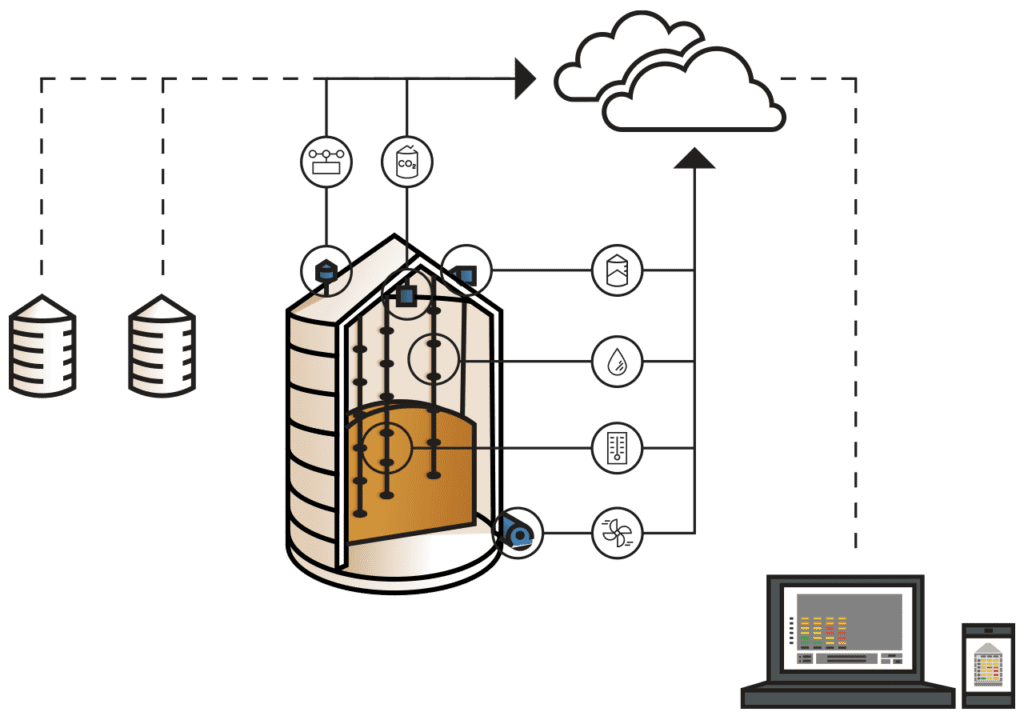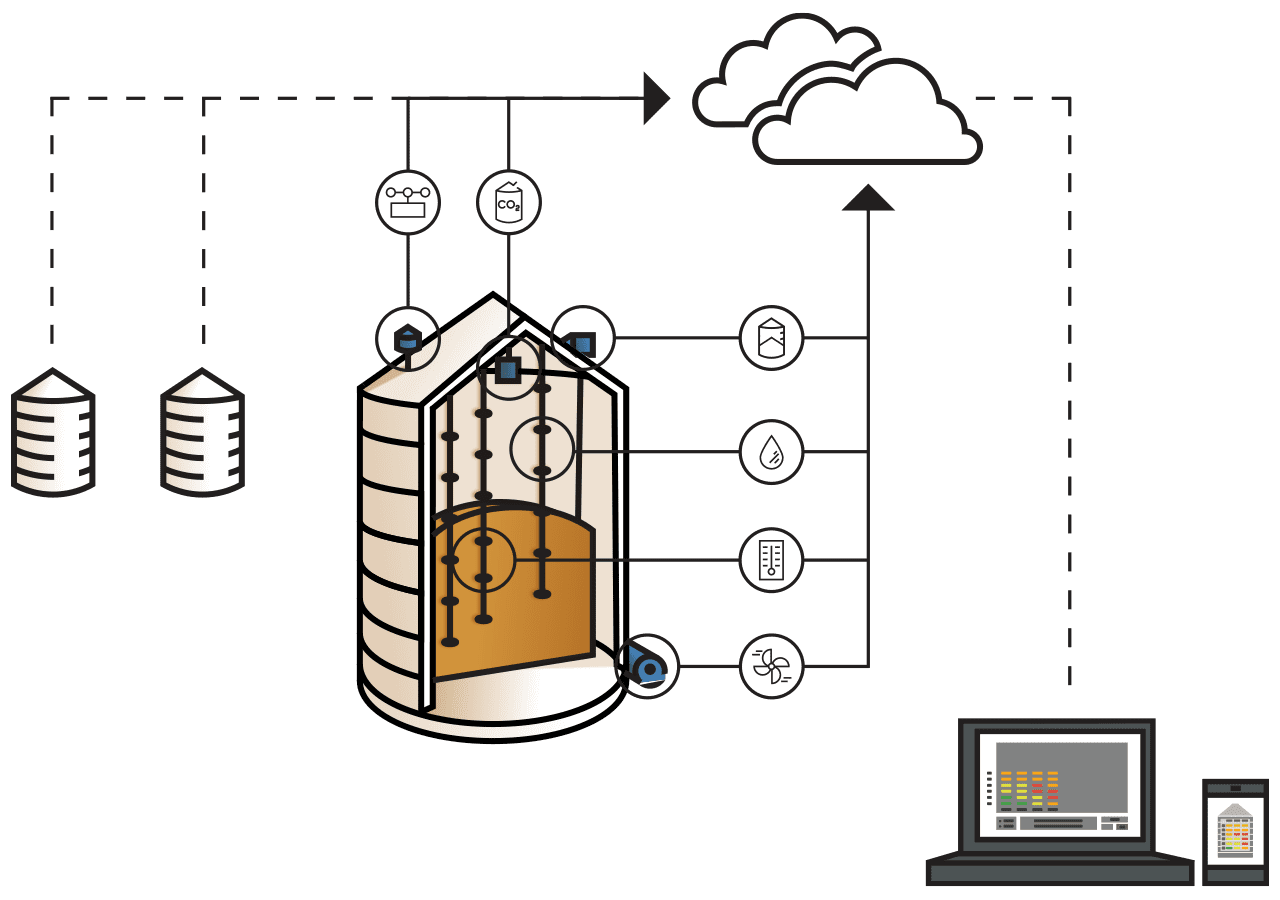As we head toward spring, the snow continues to pile up. In theory, warmer weather is right around the corner. But does warm weather mean it’s time for spring planting? Well, the answer is both yes and no.
It all depends on the frost, according to the Old Farmer’s Almanac. The forecaster, which has been around since 1792, suggests that you wait until after that first week of April to plant most grains in order to avoid a killing frost.
So what is the best time to plant? And are there different times to plant different grains? With the help of several Cooperative Extension agencies and one handy almanac, we took a look.
Preparing for Spring Planting
In order to help prepare the ground for planting, there are a few things farmers can do. The first is to assess fields for soil compaction. Last fall’s wet conditions at harvest make soil compaction likely.
Since it will also likely be a wet spring with all the snow, early spring will be a good time to check for soil compaction. The test is more reliable in wet than in dry soil. Drive a steel rod, or a soil penetrometer, to about three feet deep into the soil, and you can determine soil compaction by resistance.
Don’t automatically go to tillage to solve a potential compaction problem. Tilling wet soil can actually make compaction worse. Determine if the compaction is closer to the surface, or deeper to figure out the best way to address it.
A side effect of compaction is water runoff that caries nutrients like phosphorus and nitrates with it. Check nitrogen levels and apply an initial partial treatment instead of a full treatment, then add the rest after plants have emerged for higher yields.
It’s also a good idea at this point to start planning ahead for grain storage. Think about how much you expect to collect at harvest. Take market conditions into account and consider if you’ll need to add more bins to prepare for long-term grain storage. To help with that, here’s an earlier post about grain storage management.
Determining Time and Space
How many acres are you dedicating to planting grain? Well, that depends on the yields you’re planning for. About 1,000 square feet will yield one bushel, or 60 pounds, of grain. Also, don’t plant your crop anywhere with too much shade. In order to have quality grain, the area where you plant needs to get about eight hours of sun each day.
Iowa extension agents recommend waiting for soils to dry before spring planting. This can be tricky though since the corn planting window for a high yield this year is April 12 to May 8, depending on where you live in the state. Farmers in the northeast will need to plant earliest, with the mid-section starting anywhere from April 15th to the second week of May, and the south a few days later.
Deciding Which Grains to Plant First
Once the field is prepared, then it’s time to start spring planting. The first type of grain you can plant during the early spring is corn. The Iowa State University’s Corn Planting Guide says that “planting too early is discouraged due to wet or cold soils. The condition of the seedbed is always an important consideration for proper seed germination and seeding establishment, regardless of what date is on the calendar.”
Basically, in order to be successful, corn needs to be planted in soil above 50 degrees Fahrenheit. Why is that? Because unlike soybeans or some other grains, corn’s growing point remains underground until the sixth leaf. As a result, the soil temperature affects it in different ways.
Iowa State’s researchers took three years of data, and found that generally the best time to plant corn is between April 20 and May 5. In each case, planting during that time resulted in a 100 percent yield. “A significant yield reduction occurred only once, when the planting date was extended to late May or June,” the Corn Planting Guide states.
As we mentioned earlier, estimating your crop’s yield is important, especially as farmers now routinely have to store grain for up to a year now. With supplies currently far beyond demand, farmers have to search for more space each year. We go more into that here, while also explaining how grain monitoring is critical once you have the supplies stored.
Thinking about Soybeans and Wheat
What about wheat and other grains? Unlike corn, wheat doesn’t handle colder temperatures as well. In fact, the Cooperative Extension says the best time to plant wheat is in the first part of May, when temperatures are either approaching or are between 70 to 75 degrees Fahrenheit. Rice and soybeans are also considered good crops to plant in May.
Above all else, when it comes to spring planting, farmers need to pay attention to the soil. Cold soil can result in lower yields, and if it’s too wet, there’s too much compaction, or not enough nutrients those can create problems as well. Otherwise, even in colder weather, you have a chance for a good harvest.
Since grain never improves from the time you harvest it in the fall, your job is to keep grain in the best possible condition and not allow deterioration in storage. Plan this spring for next fall’s harvest storage needs with Tri-States Grain Conditioning experts. We are here to help.
Call us at 800 438 8367, contact us here, or live chat with us to ask about the right grain temperature monitoring system for your new or existing on-farm storage facilities.
Follow us on Facebook where we discuss a variety of farming topics including grain temperature monitoring and smart farming.



